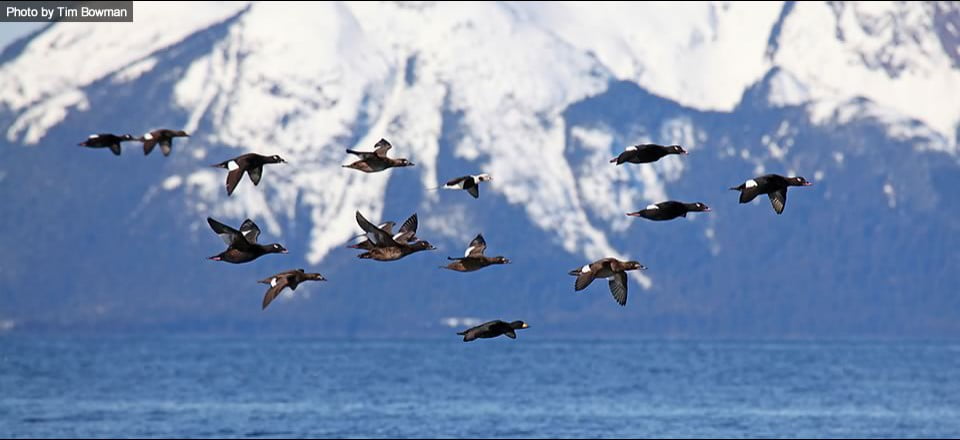Avalon New Jersey Sea Watch: Addressing Monitoring Prerequisites

Project Number: 97
Year Funded: 2009
Lead Institution(s): New Jersey Audubon Society
Project Lead: David Mizrahi
Collaborator(s): Kowa Optimed Inc
Location: New Jersey
Focal Species: All Sea Ducks, Bufflehead (Bucephala albeola), Barrow’s Goldeneye (Bucephala islandica), Common Goldeneye (Bucephala clangula), Harlequin Duck (Histrionicus histrionicus), Long-tailed Duck (Clangula hyemalis), Common Eider (Somateria mollissima), King Eider (Somateria spectabilis), Spectacled Eider (Somateria fischeri), Steller’s Eider (Polysticta stelleri), Common Merganser (Mergus merganser), Hooded Merganser (Lophodytes cucullatus), Red-breasted Merganser (Mergus serrator), Black Scoter (Melanitta americana), Surf Scoter (Melanitta perspicillata), White-winged Scoter (Melanitta delgandi)
Project Description: Assessing population status and trends in many Arctic and sub-Arctic breeding waterfowl is challenging because counting them across their range during the nesting season is logistically difficult. They also can be difficult to count on their wintering grounds as they may be widespread across the offshore waters of large lakes and extensive coastlines. Counts of birds passing during migration can be useful for assessing population trends in species that are difficult to monitor during the breeding season. Several waterbird migration monitoring sites, like Avalon, NJ, Whitefish Point, MI and Braddock Bay, NY, have systematically counted sea ducks and waterbirds for more than ten years. In particular, the waterbird migration count operated by New Jersey Audubon Society (NJAS) at Avalon, NJ (a.k.a. the Avalon Sea Watch), potentially counts the majority of Black and Surf Scoters wintering south of Delaware Bay. The goal of this project is to provide important data on Atlantic sea duck and other waterbird populations by continuing our work at the Avalon Sea Watch. Specifically, our objectives are to (1) characterize daily and seasonal waterbird movement patterns along southern New Jersey’s Atlantic coast during southbound passage, (2) investigate how movement patterns are modified by environmental factors (e.g., meteorological conditions, sea surface water temperature) and (3) monitor long-term changes in waterbird populations monitored during the period of the study.
Project Reports:
